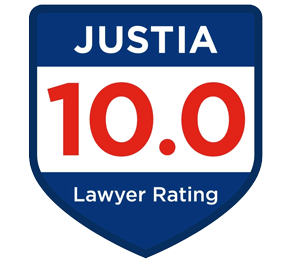In this Personal Injury Glossary, through extensive research and decades of courtroom experience, we have selected the key legal terms that are likely to arise in any personal injury case. This Personal Injury Glossary is intended to serve as a resource for our clients if they see or hear terms used during the course of their case that they are unfamiliar with. It is our goal to help protect our clients from the moment we meet and that includes educating them on easy-to-understand definitions that may help them in their fight for compensation. As always, our assistance is just a phone call or email away.
This Personal Injury Glossary covers all the key areas of Personal Injury Claims from pre-litigation through trial that attorneys, medical professionals, doctors, insurance adjusters, and judges refer to. This list includes, but is not limited to auto accidents, car accidents, motorcycle accidents, truck accidents, slip and fall accidents, trip and fall accidents, premises liability, wrongful death, insurance policies, medical and legal terminology.
A
Accident Report – The formal documentation of an accident, taken at the scene by the responding law enforcement assigned to the incident. This report will include the pertinent facts of the accident such as the contact information for the parties involved, a description of how the accident occurred, as well as witness information. Often, accident reports will include a map depicting how the vehicles collided.
Act of God – Any accident that was caused by something beyond human interference that couldn’t have been prevented. Common examples are hurricanes, earthquakes, storms, or tornadoes.
Activities of Daily Living – Sometimes referred to as “ADLs,” these are the things we usually do every day, such as eating, cooking, cleaning and bathing.
Actual Knowledge – The clear and obvious awareness and understanding of a fact, and not an awareness that is merely implied.
Acute – Of abrupt onset in reference to an injury or disease. Also, something that lasts for a short time, such as an acute illness, acute disease or acute care.
Ad Litem – “For the lawsuit” in Latin. This term is used when appointing a person to act on behalf of a child or other individual who is deemed incapable of representing him or herself.
Adjudicate – To make a formal judgement in a legal case.
Alternative Dispute Resolution – Methods that seek to resolve a legal dispute that don’t include litigation. Some examples are mediation and arbitration.
Ambulate – When someone moves or walks, under their own power — for example, a patient being able to walk in their hospital room.
Amputate – The surgical removal of a body part or limb. For example, a surgeon may amputate an irreparably broken leg.
Answer – This is a written legal response made by a defendant following the filing and service of a lawsuit or complaint. In most jurisdictions, an answer is due 20 days after the defendant is served with the lawsuit or complaint.
Anterior – Situated or located near the front or occurring before something. For example, the anterior face of the heart is near the breast bone.
Anterior Cervical Discectomy and Fusion (“ACDF”) – A surgical procedure for treating serious pain caused by nerve root or spinal cord compression. Commonly used in emergency situations or after all non-surgical/conservative treatment methods have failed. The anterior reference relates to accessing the cervical spine through the front of the neck.
Anterior Cruciate Ligament (“ACL”) – A key ligament in the human knee that connects the femur (thighbone) to the tibia (shinbone). It is often torn and/or damaged in accidents involving sudden changes of direction.
Appeal – The act of asking a higher court to examine the decision of a trial court to consider reversing the result.
Arbitration – Often considered a “mini-court case,” this is an alternative dispute resolution process for resolving a dispute between a plaintiff and a defendant, with a third-party making the final decision. It is similar to a trial but much shorter and less formal. The two parties sign a contract beforehand that confirms the decision of the arbitrator is final. In most cases, the third-party (arbitrator) is an off-duty judge or attorney. Arbitrations can be binding and non-binding.
Assignment of Benefits – The transfer of any benefits from an insurance policy to another party. For example, a person assigning their medical benefits to a hospital so that the hospital can be paid directly. This can only be completed with the written consent of the policy owner.
Assumption of Risk – A defense used by a defendant which claims that the plaintiff assumed the risk of the activity in which an incident happened, and therefore is not permitted to seek monetary damages.
At-Fault – The term given to describe a person was responsible for causing an injury or accident.
Attorney-Client Privilege – A law that ensures conversations between an attorney and their client remain private and undisclosed. This helps secure a level of trust with clients and attorneys, while also protecting information from the opposing party.
B
Back Sprain – A back injury that is caused by the stretching or tearing of a ligament.
Back Strain – A back strain is an injury caused when muscles or tendons that support the spine are twisted, torn or pulled.
Bad Drug – Another term for ‘defective medication,’ this is a medication that causes harm to a patient. Defective drug laws are part of the product liability law. Claims may be classified under the following categories:
- Manufacturing Defects – The drug was manufactured inappropriately or became contaminated during manufacture, which caused harm to the recipient.
- Design Defects – The drug caused suffering or injury through side effects, despite being properly made.
- Failure to Warn – The failure to sufficiently provide warnings and instructions (on packaging or in the instruction papers) about precautions needed for use and any side effects of the drug.
Bad-faith Claim – A claim filed by an insured person against their insurer, accusing them of unfairly denying or delaying their claim, or failing to pay the required compensation.
Benefit – In personal injury law, a benefit is financial support provided by an insurance company, employer or social program to the victim. A typical example of a benefit is the compensation an injured person receives from their insurance company for their lost wages following an injury.
Bodily Injury – This is a general term referring to any damage to an individual’s body. Common examples include cuts, burns, broken bones, spinal injuries, and bruises. Bodily injury caused intentionally is a crime, whereas accidental causes may be because of negligent or careless behavior. Most insurance policies do not provide coverage for intentional acts.
Bodily Injury Coverage (BI) – An insurance policy that is often purchased with auto insurance, homeowner’s insurance, or commercial liability insurance that provides financial assistance in the event of bodily injury. It pays for medical bills, the injury, pain and suffering and lost wages of the insured person up to a certain limit, depending on the policy.
Brain Injury – An injury to the brain caused as a result of trauma to the head, such as whiplash in an auto accident or the head hitting the ground during a trip and fall accident. The functionality of the brain is often impaired by the injury.
Bulge – A protruding part of a disc in the spine caused by a personal injury incident or degeneration of the disc.
Bulging Disc – Also known as a ‘slipped disc’ or ‘protruding disc,’ this is a common back or neck injury caused by a protrusion, herniation or prolapse to a vertebral disc, moving it away from its normal position and causing severe pain.
Burden of Proof – The legal requirement for a person or party to prove that their claim is accurate and factual. For example, in an auto accident personal injury claim, the plaintiff has the burden of proof to display that a driver was negligent and at fault for an auto accident.
C
Carrier – An insurance or reinsurance provider that insure or “carries” the insurance or reinsurance.
Careless Driving – When a person drives an automobile without proper care for the safety requirements of the road, including speeding, driving after drinking, cutting through traffic, failing to obey stop signals, using their cell phone and more. Careless driving is not considered reckless driving, as reckless driving requires a willful disregard for the safety of others. There is no willfulness requirement for careless driving.
Causation – The act of causing an accident or making something happen that then led to an accident. In personal injury claims, the plaintiff must show that their injuries were caused by something another party did or failed to do.
Cervical Spine – The entire structure of the neck’s bones, nerves, muscles, ligaments, and tendons. This is a delicate area of the body that contains the spinal cord and is associated with severe injuries when damaged.
Chiropractic Care – A health care practice that aims to use the body’s inherent powers of recovery to heal, without the use of drugs or surgery. It focuses on ensuring the body’s structure is correctly aligned to help the nervous system function properly. The goal is to find the cause of pain and suggest lifestyle changes to gain long term improvements, rather than relieving just the present discomfort.
Chiropractor – A healthcare professional who is formally trained and licensed in chiropractic care. Chiropractors use their hands or an adjusting tool to perform manipulations of the vertebrae in an effort to align the body’s structure correctly. They do not carry out surgery or prescribe drugs.
Chronic – Lasting a long time, persistent or long lasting in its effects or a disease / injury that comes with time.
Circuit Court – The name of the principal trial court in a given jurisdiction. (For example, in Florida the amount in controversy was over $15,000 but increases to over $30,000 as of Jan. 1, 2020. Every state has different jurisdictional limits to place a case into circuit court.)
Civil Remedy Notice (CRN) – A Civil Remedy Notice is provided to the Department of Insurance by an insured under an Uninsured or Underinsured Motorist policy that an insurance company has not handled a claim in good faith. It provides the insurance company an opportunity to resolve the claim. If the claim cannot be resolved, the insurance company can become liable to its insured for more than the amount of the policy under a bad faith claim.
Civil Rights – The rights possessed to political and social freedom and equality, by all citizens under the U.S. Constitution. If an individual has had their civil rights infringed upon, they are able to file a lawsuit in order to recover damages.
Claim – A civil action made by a plaintiff for physical or mental injury due to the negligence of a defendant. Or, a request made to the victim’s insurance company for coverage and financial compensation for their damages.
Claim Adjuster – The liaison between the insured party and their insurance company. The claim adjuster is responsible for overseeing the claim on the insurance company’s behalf and negotiating a resolution to an injury claim. A claim adjuster can either be an employee of the insurance company, or an independent adjuster hired but the insurance company for the specific matter. Often, when a claim is made in a location where the insurance company does not normally handle claims, it will hire an outside or independent adjuster for that matter.
Class-action Lawsuit – A lawsuit in which people with the same or similar damages caused by the same product or incident sue the defendant together as a group. A common example is when injured customers make a class-action lawsuit against a company for a defective product.
Closing Statement – The statement made by the attorney for each side after all of the evidence has been admitted. Attorney’s are allowed to argue their clients position during closing statement and they are often very emotional and heart felt. Closing statements are not considered evidence.
Comparative Fault – This is a legal defense where both parties are accused of being responsible for an accident, which could reduce the amount of compensation that could be received. It is also referred to as ‘contributory negligence’.
Compensable Injury – The term given to injuries that are eligible for compensation because the negligent party’s behavior caused the accident. For example, a person’s broken foot in an auto accident is compensable. However, if they had leg injuries caused by years of playing football, then the leg injury would not be a compensable injury. This term is most commonly seen in workers’ comp cases.
Compensation – Something (usually monetary value) that is paid for damages.
Compensatory Damages – Financial damages recovered following an economic loss, such as lost wages and damages to potential future earnings. See ‘Damages’ for more.
Complaint – The first official document that starts a lawsuit. It is made by a person or party against another, asserting various causes of action which arose from an accident. The person or party whom the complaint is filed on behalf of is called the plaintiff. The complaint only needs to set forth a short statement of the facts that will attempt to be proven and describe the types of legal claims that are being brought against each defendant/party.
Compulsory Medical Examination (CME)– A medical examination requested by the defendant and/or an insurance company to examine the injury claims of the plaintiff. The insurance companies hire their own doctors and physicians to conduct the CME.
Concussion – A traumatic brain injury caused by a direct blow or sudden movement of the head, affecting the way the brain functions. Concussions are often associated with a loss of consciousness and can also cause nausea, dizziness, disorientation, headaches and more. There are varying degrees of concussions, some of which can cause permanent damage.
Conservative Care – Also known as ‘Conservative Management,’ this is a type of medical treatment that avoids using invasive procedures. For example, if a car accident has caused an injury to a person’s neck or back, this person may choose to receive chiropractic care or physical therapy rather than surgery or injections.
Constructive Knowledge – Notice of a fact that a person is deemed by law to have known, regardless of whether they have actual knowledge. See, ‘Actual Knowledge’.
Contingency Fee – Money that an attorney receives as payment only if compensation is recovered for the client. Contingency fee arrangements are standard for personal injury cases because it allows clients to hire quality lawyers at little to no risk and incentivizes lawyers to represent clients who would otherwise not be able to afford to hire a lawyer. All contingency arrangements are governed by the Bar rules regulating the applicable state.
Contusion – More commonly known as a ‘bruise.’ An area of injured skin or tissue where blood capillaries have been ruptured.
Counterclaim – A claim filed by a defendant in a civil case that opposes the claim of the plaintiff. It states that actually, the plaintiff was the person at fault in the accident. For example, in an auto accident, the defendant may respond to the plaintiff’s claim by using a ‘counterclaim’ to argue that the plaintiff was responsible for the accident.
County Court – A court that has a designated jurisdiction, usually less than the jurisdiction of the circuit court. County courts are considered to be trial courts. (In Florida, county court jurisdiction was for claims involved less than $15,000, but on January 1, 2020, the amount increases to claims less than $30,000.)
Costs – Charges incurred during the course of the personal injury claim that are not attorney’s fees. Costs can be incurred by a personal injury attorney during the handling of a client’s case and reimbursed out of the proceeds of the recovery. Costs can also be recovered during a lawsuit to the prevailing party. Examples of costs are copy charges, filing fees, service of process fees, court reporter charges, travel reimbursement, etc.
Cross Claim – Legal paperwork that a defendant may file against the original plaintiff, a co-defendant or someone who is not yet involved in the lawsuit. For example, a defendant accused of failing to stop at a red light in an auto accident may file a cross-claim against the mechanic who recently changed her car’s brakes. She may claim that they failed to stop her car correctly, so therefore, the mechanic was at fault. Also referred to as a Cross-Complaint.
CT Scan – Computed Tomography (CT), is an x-ray image produced by a computer that can control the motion of the x-ray source. CT scans are most often used on the brain to analyze serious injuries.
D
Damages – The harm caused to an injured party and payments that are recovered in a civil court case because of another party’s negligence. There are many types of damages, some examples are:
- Compensatory Damages– These damages cover injury or incurred losses due to the negligence of another party. They aim to make the plaintiff “whole” again.
- General Damages – Although still compensatory, these damages have subjective value. Such as pain, suffering, future damages, disability, effects on expected life span, mental suffering, loss of companionship, trauma, loss of potential income and more.
- Punitive Damages – Damages that are used to punish a defendant to help them learn their lesson and deter others from making the same mistakes. Punitive damages are rarely seen in civil litigation but are common in cases with extreme negligence or intentional crimes. Also referred to as ‘Exemplary Damages.’
- Special Damages – These are compensatory damages that are the consequence of injuries, such as medical bills, ambulance charges and loss of income.
- Deductible – A sum of money that an insured person must pay for making a claim. When this sum has been paid, the insurance providers cover the rest of the costs provided for under the policy of insurance.
Defective Medication – Also referred to as a ‘bad drug,’ this is a medication that causes harm to a patient. Defective drug laws are part of product liability law. Claims may fall under the following three categories:
- Manufacturing Defects – The drug was manufactured incorrectly or became contaminated during manufacture, which caused harm to the recipient.
- Design Defects – The drug caused harm or injury through side effects, despite being appropriately manufactured.
- Failure to Warn – The failure to sufficiently provide warnings and instructions about the use and side effects of the drug.
Defendant – A person (or an insurance company) who is being sued for causing an injury.
Degeneration – The process by which a tissue deteriorates and losses it functional ability. Degeneration is usually found in older adults and can be caused by aging, traumatic injury, or wear and tear.
Degenerative Disc Disease (DDD) – The natural breakdown of intervertebral discs of the spine. Despite the name, it is not regarded as a disease. Instead, it is the consequence of everyday natural stresses and minor injuries that cause the spinal discs to weaken over time.
Deliberations – The process of a jury applying the facts presented during the trial to the law which the judge gave the jury and ultimately reaching a verdict.
Demand Letter – A formally written letter that is sent to the opposing party, usually with a threat of legal action or a request for action on their behalf. Within the demand letter is the theory of liability, amount of damages and a claim for compensation.
Deposition – This is an out-of-court testimony that is taken under oath and recorded. Usually conducted by both party’s lawyers, the questions are asked by the opposing attorney and the answers are taken down by a court reporter which is then in turn made into a transcript for future use in the case. Depositions can also be videotaped or taken over the telephone.
Diagnosis – The process of identifying a person’s medical condition and injuries based on their symptoms and diagnostic tests.
Disc – Spinal discs are made of gelatinous material called collagen fibers which are attached to the vertebrae, providing shock absorption for the spine. They are prone to injury due to stresses placed on the back/neck during an accident or as the disc ages.
Discectomy – The partial or complete surgical excision of a spinal disc.
Disclosure – When documents or other information is released upon request made by an opposing party; or to share relevant information.
Discovery – The legal process where both parties gather information from each other related to the plaintiff’s allegations and the defendant’s defenses. This can include a range of information, including depositions, written questions, interviews, documents, medical records and more.
Distracted Driving – When an individual loses focus and the control of their vehicle due to distraction, which may include:
- Using a cell phone (Texting, browsing, phone calls, etc.)
- Using a GPS
- Watching something out the window
- Eating and drinking
- Talking to someone in the vehicle
- Grooming
- Controlling the audio system
Driving Under the Influence (DUI) – Driving a vehicle while under the influence of alcohol, chemical substances, or controlled substances. In Florida, DUI is when a driver has a blood alcohol content (BAC) of 0.08% or more. The BAC limit is just 0.02% for anyone under 21 years old, and 0.04% for commercial drivers regardless of their age. Additionally, a driver can be considered under the influence of alcohol or a controlled substance if their normal faculties are impaired. In fact, someone can be DUI simply from their own prescription. The consequences of DUI can be severe, including fines, probation, community service and/or imprisonment. If the driver of the vehicle who caused the accident, was DUI, most jurisdictions allow punitive damages to be recovered in addition to actual damages.
Driver Exchange of Information – A formal document created by law enforcement after an accident which has relevant information about the drivers and vehicle owners involved in an accident. The Driver Exchange of Information is not as detailed as an Accident Report.
Duty of Care – A requirement that an individual or business acts towards others with attention, care and caution. If a person fails to meet these standards, then their behavior will be considered negligent and potentially responsible for the opposing party’s damages. For example, a restaurant must ensure their property is safe from hazards and is safe to enter.
E
Edema – A medical term for ‘swelling.’ Body parts can swell from injury or a medical condition. This term is often used to describe swelling seen on an imaging study such as an MRI of the spine.
Emergency Medical Condition (EMC) – A condition, that, without immediate medical attention, is likely to result in: danger to the person’s health, severe damage to the body’s functionality, serious damage to an organ or other body parts. An EMC patient has severe symptoms such as trauma and severe pain. Under Florida PIP law, a patient must be judged to have an EMC before they can receive the full $10,000 in PIP benefits.
Epidural Steroid Injection (ESI) – An injection (that includes a corticosteroid and anesthetic) that helps relieve back, neck, arm and leg pain caused by inflamed spinal nerves. The medicines are delivered to a fat-filled area on the back called the ‘epidural space.’ Pain relief can last from several days to several years. Injections are usually performed alongside physical therapy to strengthen the back muscles and provide long term healing.
Estate – All the possessions, property and assets of a deceased person. An estate must be opened in order to represent a deceased person in a legal proceeding.
Excess Judgement – An amount of extra damages over and above the policy limits of an insured. For example, if a jury awards $250,000 against a defendant and the defendant only has $100,000 in insurance coverage, the excess judgement would be $150,000.
Exhaustion of Benefits – When all the money allocated to assist a party has been depleted. This term is typically used when describing when PIP benefits have been entirely paid out.
Exemplary Damages – Damages that are used to punish a defendant to deter them from making the same mistakes and setting an example for others. Exemplary damages are rarely seen in civil litigation but are common in cases with extreme negligence or intentional crimes. Also referred to as ‘Punitive Damages.’
Expert Witness – A witness who is qualified as an expert in a field of technical, scientific, legal or professional affairs. In anto negligence cases, an example of an expert witness would be an engineer trained in accident reconstruction who is retained to render an opinion as to the forces involved in a particular accident.
Extremity – The end or most remote part, section, or point of an object or body part. Often used to describe limbs (although incorrectly in medical terms).
Extrusion – The pushing out, or an out of position body part. For example, spinal disc herniations can be described as extrusions.
F
Facet Block Injection – Minimally invasive injections using fluoroscopy or CT imaging to guide the placement of medication into a ‘facet joint,’ to reduce inflammation and provide pain relief.
Facet Joint – Two of these joints are found at every level of the vertebral column. They provide stability to the spine and help with movement. As they are in constant motion, they can wear out or become torn, causing inflammation, pinching of nerve roots, and severe pain.
Fault – Negligent or intentional failure to act reasonably and according to the law, which caused an injury of another person. Failing not to take proper precautions, care or even lacking necessary skills can all be examples of fault. A common use of ‘fault’ is in auto accidents; for example, the driver may have been at fault for being careless and crashing into another’s vehicle, causing injury and property damage.
Fee Agreement – This contractual agreement establishes the work which must be done or has been done between a client and their attorney or other service providers. Fee agreements must be in writing.
Field Adjuster – Not dissimilar to a ‘claims adjuster,’ but they take care of most of the out-of-office work in accident claims. Their role is to get the claim settled through; in-person meetings, scene investigations, damage inspections and negotiations with both parties.
First-Party Claims – Claims that are made towards a party’s own insurance company and not against someone else’s insurance company.
Fluoroscopy – The examination of tissues, deep structures and moving structures of the human body through x-ray, a fluoroscope or video fluoroscopy.
Fracture – The breaking of a bone or other body part. Commonly caused by direct trauma, twisting of a limb or diseases. A full break of a bone (such as breaking a bone in half) is called a “Compound Fracture.”
Fraud – A wrongful or deceptive behavior that is intended to result in financial gain. For fraud to exist, there must be an intentional or negligent misrepresentation that is relied upon to the detriment of another.
Fusion – The joining of two entities into a single unit. Such as the joining of two bones (which stops motions between the two), or two membranes. Most often used in relation to a spinal fusion which is a procedure that joins multiple vertebrae together.
G
Gait – A person’s manner of walking. One’s gait can be affected by trauma to another part of the body.
Gait Analysis – Gait analysis can be carried out by observing a person walking in a straight line. This is an integral part of the diagnosis for neurologic disorders and the study of a patient’s progress through rehabilitation.
General Damages – Money recovered for injuries suffered or any breach of a contract, when there is no specified monetary value present. General damages can include pain, suffering, compensation and the loss of a family member. See ‘Damages’ for more.
Good Faith – An honest intention to act without taking unfair advantage of another party or to defraud them. An insurance company fairly valuing a person’s damages and paying their compensation without any problems is an example of good faith.
Gross Negligence – An extreme use of willful or intentional disregard of the required duty of care, which results in injury or harm to another person. For example, pushing a person into the road or going extremely far over the speed limit while driving.
H
Hazard – Dangerous conditions that are likely to cause injury or damage to an individual. Such as a slippery floor, a hole in the sidewalk, a car without working lights, or uneven stairs.
Hazardous Exposure – When a person makes physical contact with a toxic substance or they are close to toxic airborne substances, that could affect their health. The liability for hazardous exposure may be shared; for example with a property owner and a manufacturer.
Head injury – An injury to the head that may include the scalp, skull and/or brain. The most severe consequence is traumatic brain injury. Closed head injuries include direct trauma, such as the head hitting a steering wheel. Metal piercing the skull would be considered to be a penetrating head injury. These injuries can be fatal or cause life-changing brain damage.
Health Care Expenses – The costs involved in a person’s medical care, such as seeing different healthcare providers, doctors, specialists, surgeons, therapists and more.
Herniation – An abnormal protrusion of a spinal disc. They occur when the gelatinous material of the disc expands outward due the trauma from an accident. Herniations are often discovered on MRIs and if they impinge or press against a nerve, can cause severe pain and loss of movement.
Herniated Disc – A back injury where the outer portion of the vertebral disc is torn, causing the inner portion to extrude (herniate) through the fibers. This can compress the nerves around the disc and create pain that spreads throughout the body. It can often be treated with medication and nonsurgical methods such as physical therapy, chiropractic care, and injections.
HIPPA Act – The Health Insurance Portability and Accountability Act. This is a US law that provides privacy standards that restrict access to patients’ medical records and health information without their consent.
I
Income Replacement Benefits (IRBs) – Money that covers the loss of income that an injured person would usually earn while working. A typical example is an auto accident victim receiving payment from their car insurance company for their lost wages.
Independent Medical Examination – A medical examination requested by the defendant and/or an insurance company to examine the injury claims of the plaintiff. The insurance companies hire their own doctors and physicians to conduct the IME. Often referred to as a ‘Compulsory Medical Examination,’ because they are generally considered bias.
Injection – The delivery of a medicinal substance or nutrient into the body through a subcutaneous tissue, muscular tissue, vein, artery, rectum, vagina, urethra or other canals or cavities. Typically performed with a needle and syringe.
Insurance – A contractual relationship between an insurer and the insured. The insured pays an ongoing fee (a premium) for the promise of being reimbursed and compensated in the event of injury or other circumstances (defined by the policy) by the insurer.
Insurer – The company that provides coverage and benefits through an insurance policy to their customers.
Insured – A party who is protected and covered under an insurance policy by an insurer. The terms of the coverage are set forth in a written contract between the insurer and the insured.
Interrogatories – Written questions that a party’s attorney submits to an opposing party to answer under oath, within a specified time frame. Interrogatories are standard in all personal injury cases and are a way for each side to learn more about the other side’s case.
J
Judgment – The final result of a court case. For example, after an auto accident trial, a judge or jury will determine which party was at fault and whether they must pay the plaintiff. The final decision by the jury will be the basis of the Judgment.
Jury – The group of people selected by attorneys representing both sides of a lawsuit to be the trier of fact. The jury will apply the facts presented during the trial to the laws which the Court gives them to ultimately render a jury verdict. If the jury is not able to reach a unanimous verdict, then the case is declared to be a mistrial and must be retried.
Jury Instructions – These are the instructions and applicable law given to the jury by the judge before the jury begins their deliberations..
Jury Trial – A trial of a lawsuit where the case is presented to the jury, not a judge, to make a final determination of the facts presented to them.
K
Known Loss Rule – A rule that states a person cannot get insurance coverage for something that is already damaged. This prevents people from buying insurance to cover something that is already damaged or lost.
L
Lawsuit – A legal action (complaint or petition) made by one party against another party, which is decided in a court of law.
Legal Malpractice – The term given when an attorney breaches their legal duty to a client. A lawyer must perform with honesty, good faith, fairness and trust towards their client. They must also have the necessary legal skills and knowledge as fellow attorneys.
Letter of Protection – A letter written and sent by a personal injury attorney to a healthcare professional to allow an injured person access to medical care that they couldn’t otherwise afford. This is usually exchanged between a law firm and a medical provider to memorialize the promise that the medical bills will be paid from the settlement proceeds.
Letter of Representation – Also known as a ‘claim letter,’ this is sent by an attorney to the defendant on behalf of the plaintiff. At the outset of every personal injury case, a lawyer will send a letter of representation to the defendant or insurance company that may provide coverage for the loss.
Liability – The legal responsibility for one’s acts or omissions; a legal obligation to perform, usually involving the payment of monetary damages. Liability is required in every personal injury case in order for damages to be recovered.
Liability Limits – An agreed sum beyond which an insurance company is not liable for payments due to a third party. The insured remains legally responsible above these limits.
Limitation of Risk – The maximum sum an insurer may be obliged to pay in a one-loss event.
Litigant – A person who is involved in a lawsuit, a term for either the defendant or the plaintiff. Witnesses and attorneys are not included, but a co-defendant or co-plaintiff is.
Litigation – The process of taking and pursuing legal action and/or filing a lawsuit.
Litigation Risk – The term given to the probability of winning a lawsuit in court according to an attorney’s assessment. The risk is based on unpredictable factors such as the judge, jury, witnesses, potential surprises from the defendant and any last-minute evidence.
Loss – The monetary valuation of an injury or damage. Such as pain, suffering, income, medical costs, etc.
Loss of Consortium – Damages awarded for the loss of companionship to a family member, husband or wife.. These claims are usually made by the spouse of the Plaintiff.
Loss of Earnings – When an injured person has missed work, changed jobs or had their business affected due to their injuries which has resulted in a loss of income. Loss of income can refer to both the past or the future.
Lost Wages – Wages that an injured person would have earned through their job, but has lost due to their injuries. Lost wages can refer to both the past or the future.
Lumbar Spine – An area of the spine, located above the pelvis that is commonly involved in lower back pain. It includes five vertebrae.
M
Malpractice – The act of not performing in accordance with the applicable standard of care for a profession. Any failure to meet the required standards of care and conduct is considered malpractice. See Medical Malpractice and Legal Malpractice for more.
Mandate – An order issued by a court to enforce a judgment, sentence or decree.
Maximum Medical Improvement (MMI) – The point during recovery from an injury when an injured person’s condition is considered at its peak and no further improvement is expected. This term is commonly used in personal injury cases at the conclusion of treatment. A permanency rating may also be given at this time by the treating physician.
Medial Collateral Ligament (MCL) – A wide, flat ligament attached superiorly to the medial condyle of the femur and inferiorly to the medial condyle of the tibia. It provides stability for the knee joint, resisting valgus stress.
Mediation – An alternative dispute resolution method that parties can use to resolve their own disputes without having to go to trial. During a mediation, a neutral third party will help both sides to reach an agreeable settlement. Mediation is required in every civil lawsuit prior to trial. Everything that is said during mediation is confidential.
Medical Malpractice – Negligence or misconduct performed by a healthcare professional, such as a doctor, specialist or hospital. This includes any failure to act in accordance with the applicable standard of care, which in turn causes injury to the patient. Medical Malpractice requires expert witnesses and, in Florida, is governed by Florida Statutes which have to be strictly complied with in order for a case to move forward.
Medical Malpractice Caps – Caps that limit the amount of compensation a victim may be able to receive for medical malpractice. Designed to protect insurance premiums from rising too high.
Mesothelioma – A tumor (often cancerous) of the epithelium lining of the lungs, heart or abdomen. Mesothelioma is commonly related to exposure to asbestos dust.
Mitigating Circumstances – Conditions or circumstances that don’t excuse negligence or criminal behavior, but may be used to reduce the degree of fault and potential penalties.
Motion – A formal request made to a judge to make a ruling or take action on a legal issue or question. Motions are the mechanism by which lawyers ask a judge to decide a specific issue.
MRI – Magnetic Resonance Imaging – A noninvasive nuclear medical procedure for imaging tissues with high fat content, that would be impossible to scan with alternative radiologic scans such as X-Rays. An MRI image provides detailed information so it is possible to identify cancerous, atherosclerotic and traumatized tissue masses. Tests involve a patient lying in an MRI machine for between 15-90 minutes.
MVA – MVA is an abbreviation for motor vehicle accident and is commonly used in medical records by doctors for the sake of brevity.
N
Named Insured – A person whose name is included on an insurance policy, rather than a person who may be covered but is not actually named in the policy documents.
Neck Sprain – A stretched ligament or muscle in the neck. This injury can occur without any apparent cause, but it is often caused by a sudden change of direction or a sudden impact due to a motor vehicle accident.
Neck Strain – When fibers in a neck muscle or tendon stretch too far and tear.
Negligence – The failure to exhibit care towards others that would be considered reasonable under the circumstances. Negligence forms the basis of personal injury claims. To prove negligence, a plaintiff must prove a defendant had a duty of care to perform in a certain way and that they failed to do so, which resulted in damages. Negligence may also include whether the damages and hazards were foreseeable and preventable.
Negotiation – The discussion that takes place in an attempt to reach an agreement to settle. Typically, the plaintiff starts with a settlement demand while the insurance company or defendant responds with a low counter offer. A back-and-forth takes place until an agreement can be reached. Negotiations can take place at any stage of the case or claim.
Nerve – Cordlike bundles of fibers made up of neurons through which sensory stimuli and motor impulses pass between the brain and the rest of the body. Together, nerves form a network for sending information through the body.
Nerve Conduction Study – A noninvasive method for studying a nerve’s ability to carry an impulse. In this test, an electrical shock is sent to a nerve that controls a muscle. The reaction time is then recorded and an assessment can be made whether the nerve’s impulse conduction is slow or regular. For patients with cut or damaged nerves, the slowing is extreme.
Neural Foramina – Opening on the sides of the spinal canal where nerve roots exit.
Neurologist – A medical professional that specializes in the diagnosis and treatment of disorders of the brain and nervous system.
Neurology – The clinical study of the nervous system and its disorders.
No-Fault – A term for ‘Personal Injury Protection.’ This is a type of auto insurance coverage that provides first-party benefits for loss of income, medical bills, funeral expenses and other expenses that do not require any proof of fault or negligence to be awarded. Although most states no longer require no-fault benefits, some still mandate this insurance to be carried by every vehicle on the roads, excluding motorcycles. Florida is one of the states which mandate that all vehicles, excluding motorcycles, carry No-Fault insurance.
Non-Stacked Insurance Coverage – A type of auto insurance where coverage is limited to one specific vehicle, rather than combining the policy limits for multiple vehicles under one policy. This term is most often used in relation to Underinsured / Uninsured Motorist insurance coverage.
Notary – An individual who has been licensed by the state to carry out acts in legal affairs. For example, witnessing signatures on documents. Their seal and signature provide proof that they witnessed a signing take place. Most releases and interrogatories need to be signed by a notary.
Notice to the Company – Also known as “Notice to Insurer” is a written notice sent to an insurance company about an incident in which a claim will be made upon.
Notice to Insurer – Also known as “Notice to the Company” is a written notice sent to an insurance company about an incident in which a claim will be made upon.
O
Occupational Disease – Any illness that was caused because of the conditions of a workplace. For example, workers in a plastic factory being exposed to harmful chemicals that later result in health complications.
Offer – A sum of money made by an insurance company or a Defendant to settle a claim. In a personal injury claim, an offer will normally be made verbally by an insurance adjuster and then confirmed in writing. In response, the party to whom the offer is made may accept it, keep negotiating or file suit.
Open and Obvious – A rule that is used as a defense by property owner to explain why they are not responsible for the plaintiff’s injuries. Under the open and obvious doctrine, the defendant, property owner, may not be liable for injuries caused by a dangerous condition if the dangerous condition was open and obvious and therefore, avoidable. For example, a ladder in the aisle of a store is open and obvious and could have been avoided. However, in Florida, the open and obvious doctrine may still not excuse the defendant if it is deemed that they should have removed or prevented the danger anyway.
Opening Statement – The statement made by both parties’ attorneys at the start of a trial, which outlines the facts that each side plans to present during the trial. Opening statements are not considered evidence, just a map of the case.
Orthopedics – The medical specialty that deals with the prevention or correction of injuries and disorders to the skeletal system, muscles, joints and ligaments.
Out-of-Court Settlement – An agreement made between a plaintiff and defendant which doesn’t require any court or judge approval. This settlement is usually made between the attorneys before a trial. This can be achieved during mediation, arbitration or on the lawyers’ own terms.
Out-of-Pocket Expenses – Expenses related to injuries that are paid by an injured person’s own funds before they receive benefits. This may include travel, medications, devices or more. See Special Damages for more.
P
Pain Management – The process of providing medical care to remove or alleviate pain. This includes pharmacological, nonpharmacological, and other approaches.
Pain and Suffering – The physical discomfort, mental trauma and other forms of suffering and negative emotions that a claimant suffers after being injured in an accident. This is a common form of non-economic damages that are sought in personal injury claims and the amount is based on the injuries incurred.
Paralegal – An individual certified to assist a lawyer in any function to prepare a case including research, investigation, summaries and the retrieval of records. In most jurisdictions, paralegals need a degree or certification in order to hold themselves out as one.
Partial Disability – Disabilities that are not total but restrict a person from performing at full capacity.
Party – Any person or entity that is named in a lawsuit, whether it be a plaintiff or a defendant.
Pecuniary Damages – The term given to any loss of past and future income. See ‘Damages’ for more.
Permanent Injury – Physical or mental damage that will permanently restrict the daily activities of a person. In personal injury lawsuits, a permanent injury can be a significant element in awarding general damages.
Personal Injury – The area of law and legal practice that focuses on all physical, emotional and financial damages caused by another person’s fault. The most common examples of personal injury claims are auto accidents, truck accidents, motorcycle accidents, premises liability, trip and fall accidents, and slip and fall accidents.
Personal Injury Protection – See ‘PIP’ or ‘No Fault’ for more information on this subject.
Personal Representative – A term used for the executor or administrator of an estate. A personal representative is the person that is substituted for the party that cannot be a party themselves. This occurs in the case of children, deceased, or those mentally incapable to serve.
Physical Therapy – The treatment of pains, diseases or injury by physical means. For example, massage, exercise, hydrotherapy, ultrasound and manipulation. Physical therapy is considered to be conservative and non-invasive.
Pinched Nerve – When excessive pressure is applied to a nerve by surrounding tissues, bones, cartilage, tendons or muscles. The pressure disrupts the nerve’s function, which causes severe pain or other negative sensations.
PIP – An acronym for ‘Personal Injury Protection,’ an auto insurance coverage mandated by the State of Florida. It obliges insurers to provide first-party benefits to policyholders without regard to fault. In Florida, coverage includes the following:
- $10,000 in medical bills.
- $5,000 in death benefits.
- $2,500 for non-emergency medical conditions
Plaintiff – A person(s) in a claim that is taking legal action against another party. In personal injury cases, a Plaintiff is the injured person or claimant and the Defendant is the party that is responsible for the incident.
Pleading – Any document or request filed with the court. Any formal document where someone responds to allegations, denies claims, or alleges defenses.
Policy Limit – The maximum monetary amount of coverage that an insurer is contractually obligated to provide under a specific policy.
Post-concussion Syndrome (PCS) – A mild form of traumatic brain injury. This disorder has various symptoms, including headaches, dizziness, nausea and irritability. PCS can last for weeks or months after the initial concussion.
Post-traumatic Stress Disorder (PTSD) – A mental health condition caused by experiencing or witnessing a traumatic or stressful event. Symptoms include but are not limited to flashbacks, nightmares, severe anxiety and uncontrollable thoughts.
Posterior – The position of something located behind or at the rear of. In medicine, it is the opposite of anterior. For example, the posterior cruciate ligament in the knee can be torn in a personal injury accident.
Prayer for Relief – A request made by the plaintiff to the court for specific relief or damages. For example, a monetary value to help recover from an injury.
Pre-suit – The process that takes place before a lawsuit is officially filed. This includes notifying the other party of the claim, conducting an investigation, gathering facts and documents, and settlement negotiations. Most personal injury cases settle during the pre-suit phase.
Precedent – When a previously decided case becomes the basis and example for determining any future cases. For instance, if the Florida Supreme Court found that employers may fire employees who were in possession of illegal substances, then all lower courts in Florida would have to follow this rule.
Premises Liability – A legal concept that holds property owners, landowners and tenants responsible if someone on their property gets hurt due to a dangerous condition. Premises Liability claims are based on the legal theory of negligence. If a business owner fails to keep the premises in a safe condition, fails to have adequate security, or fails to train and/or supervise employees which then in turn causes injury to another, this negligence may give rise to a premises liability case.
Preponderance of Evidence – The legal burden of proof which they plaintiff needs to exceed in order to win their civil case. In personal injury claims, the plaintiff must prove that it was more likely than not that the fault of the defendant which was the cause of the injury.
Probate – A legal process supervised by a court following a person’s death that includes, proving the authenticity of a will, appointing a person to handle the deceased’s affairs, identifying the deceased’s property, paying taxes and debts, identifying any heirs, and distributing the deceased person’s assets in accordance with their will and the state law.
Proceeding – Any court hearing in a legal case.
Product Liability – The responsibility of a manufacturer, business or seller of a product for bodily injuries or other damages caused because of the defective product.
Prognosis – The predicted chance and duration to recover from an injury. This is determined by a doctor, based upon a patient’s symptoms and their circumstances.
Property Damage – Damage to property caused through someone else’s negligence, intentional destruction, or because of an act of nature (see ‘Act of God’). This may include damage to a vehicle, building, personal belongings or any other possession.
Property Damage Coverage – A form of insurance that helps pay to repair the damage you cause to another person’s property or vehicle or damage caused to your property or vehicle.
Proposal for Settlement – This legal process gives either party in a personal injury claim the chance to offer a settlement to the opposing party before a trial. It only applies to cases where a lawsuit is pending. In most jurisdictions, if the other party does not accept the proposal for settlement, and the award is more than 25% of what was offered by the plaintiff, attorneys’ fees can be imposed as a penalty.
Proximate Cause – Any event that is recognized to be related to the cause of an injury.
Punitive Damages – Damages that are used to punish a defendant to help prevent a repeat offense and deter others from doing the same. Punitive damages are rarely seen in civil litigation but are common in cases with outrageous negligence or intentional crimes. Also referred to as ‘Exemplary.’
Q
Quality of Life – The life a person had before an accident or after an accident. Quality of life assessments can include:
- Activities of Daily Living
- Mobility and Organization
- Social life and the ability to interact
- Level of satisfaction of life
- Recreational activities
- Work-related activities
- Future opportunities
Qui Tam – Latin for “who as well.” A legal claim brought on by a citizen that alleges fraudulent billing against a government contractor. If successful, the plaintiff is entitled to a share of the funds recovered by the government as a reward for being the “whistleblower” and exposing the wrongdoing.
Quid Pro Quo – Latin for “something for something.” When parties exchange something to form an agreement..
Quid Pro Quo Sexual Harassment – This is a form of sexual harassment where an employer offers or promises favors, promotions or other work practices in return for a sexual favor or secrecy about a sexual harassment incident. For example, an employer may promise an employee a raise if their sexual harassment incident remains silent.
R
Radiation – The process where energy is emitted as particles or waves, such as electromagnetic waves, sound and gamma-rays in nuclear decay.
Radio Frequency Ablation (RFA) – A medical procedure used to reduce pain. In personal injury cases, RFAs are performed on the nerves surrounding the spinal column in order to alleviate pain. RFA uses an electrical current to heat up a small area of nerves or the tissue surrounding the nerve to prevent the nerve from sending pain signals
Radiculopathy – The result of one or more nerves not working properly which inturn can result in pain, weakness, numbness or difficulty controlling certain muscles. Also referred to as a ‘pinched nerve.’ Poor lifting techniques, car accidents, back injuries, and poor posture are common causes.
Radiology – A method of diagnosis and treatment of disease that uses X-rays and radioactive substances.
Reckless Driving – Driving an automobile with willful or wanton disregard for the safety of others or property including speeding or going too fast for the circumstances. Reckless driving is a misdemeanor crime and is often the cause of injuries to clients.
Referral – The act of sending someone to a person who is qualified to deal with their situation. An example is an orthopedic doctor sending a patient to see a neurologist for their brain injuries.
Rehabilitation – The process in which the skills or movement necessary for self-sufficiency is restored following an injury or other medical condition.
Rehabilitation Benefits – The treatments or programs provided by an injured person’s health insurance, with the goal of helping the person recover from their injury to restore the skills or movement necessary for self-sufficiency.
Request – When a person or party expresses their desire for another party to do something. For example,
- Request for a medical test.
- Request for admission of truth or evidence
- Request for documents or physical evidence
Rotator Cuff – A set of four muscles that control the rotation of the shoulder. Rotator cuff injuries are common in personal injury claims.
Ruptured Disc – Also known as a ‘slipped disc’ or ‘protruding disc,’ is a common back injury caused by a protrusion, herniation or prolapse to a vertebral disc, moving it away from its normal position and causing severe pain. The main cause for these injuries are car accidents.
S
Set-off– A claim made by someone who is alleged to owe money, stating that they believe the sum should be reduced as the other party or another entity has already contributed to the losses. Setoff is often included in a counterclaim made by a defendant or as an affirmative defense.
Settlement – The conclusion of a dispute, claim, or lawsuit, resolved by a negotiated agreement that removes the need for a judge or jury to determine a resolution. Most personal injury claims result in a settlement rather than a trial.
Settlement Statement – The document outlining the details of the financial settlement. The settlement statement is an accounting of where every dollar of the settlement money has been applied. In most jurisdictions, a settlement statement must be signed by a client prior to the disbursement of funds.
Sexual Assault – Any sexual contact or behavior that does not involve the explicit consent of the recipient. This can be anything from rape to nonconsensual touching.
Slip-and-Fall – A type of personal injury claim in which an individual slips or trips on someone’s property and is injured as a result. The property owner can be liable if there were “dangerous conditions” that they knew or should have known or warned the plaintiff about and failed to do so.
Slipped Disc – This is a common back injury caused by a protrusion, herniation or prolapse to a vertebral disc, moving it away from its normal position and causing severe pain by rubbing or touching a nerve.
Special Damages – These are compensatory damages that are the consequence of injuries, such as medical bills, ambulance charges and any loss of income. See damages.
Specific Loss – A specific loss is the permanent loss of a body part or the ability to use a body part, due to activity that resulted in injury.
Spine – The structure of vertebrae that extends from the skull to the small of the back. It encloses the spinal cord and supports the thorax and abdomen.
Spinal Canal – The passage formed by openings in the articulated vertebrae in which the spinal cord and its membranes pass through. Often referred to as ‘vertebral canal.’
Spinal Canal Stenosis – An abnormal narrowing of the spinal canal that results in pressure on the spinal cord or nerve roots. Symptoms include pain, numbness or weakness.
Spinal Cord – The bundle of nerve fibers and surrounding tissue that is enclosed within the spine, connected nearly every part of the body to the brain, which forms the central nervous system.
Sprain – An injury to a ligament that is caused by an abnormal or excessive force applied to a connecting joint.
Stacked Insurance Coverage – A type of auto insurance that allows you to combine or “stack” the limits for each vehicle you own, resulting in a greater amount of total coverage. For example, if you have two vehicles in your household and buy stacked insurance coverage, you will have twice the amount available. This term is used primarily when describing underinsured / uninsured motorist coverage.
Strain – An injury caused by the stretching or tearing of muscle fibres. Symptoms include swelling, pain, bruising and muscle spasm.
Stacking of Coverages – The term given when two or more policies’ limits are stacked or multiplied to apply to a single accident in a claim.
Standard of Care – The level of care, caution and prudence that a reasonable person should expect to receive from medical assistance and services.
Statute of Limitations – A law that dictates the period of time that a person is able to file legal action in. It usually begins from the moment an incident occurs. In Florida, the statute of limitation for personal injury claims is four years, except for any claims of Medical Malpractice or Wrongful Death, which have a period of 2 years to make a claim.
Strict Liability – A legal concept that extends the responsibility of an accident to another party, even if they weren’t directly involved. A typical example would be a car manufacturer in an auto accident, which was caused by faulty brakes. Although the manufacturer was not directly involved in the accident, their responsibility for supplying reliable brakes would make them liable.
Subpoenas – An order given by a court that obliges a party to be at a location at a specified time to give testimony. Once a personal injury lawsuit is filed, a lawyer has subpoena power to collect documents and compel the attendance of witnesses.
Subrogation – A legal right that allows a party to make a payment that is owed by another party, with the intention of later collecting the money from the party that originally owed it. For example, if someone is at fault for damaging your car but is unable to pay it, then your insurance company can cover the costs so you don’t have to wait. Through subrogation, your insurance company can later reclaim the money they paid, from the at-fault driver.
Supplemental Demand – A follow-up or supplement to the original demand. Often, after submitting a demand to an insurance company, the adjuster will request clarification of an issue or more records. A supplemental demand is what is then sent to the insurance adjuster so that the demand can be more fully analyzed.
T
Temporomandibular Joint (TMJ) – TMJ is an area of the jaw made up of muscles, blood vessels, nerves, and bones. It connects the lower jaw to the skull, in front of the ear. There is one located on each side of the jaw. Temporomandibular Joint (TMJ) Syndrome is a condition that can be caused by injury, disease, oral habits and degeneration with age.
Tender – The act of presenting another person with an unconditional offer and/or to submit payment to another party. When an insurance company tenders its policy, that means that it pays out the full amount of the insurance limits to the claimant.
TENS Unit – A transcutaneous electrical nerve stimulation (TENS) device delivers small electrical currents to targeted areas of the body. The currents are used for relieving pain, either temporarily or permanently by controlling pain signals, nerves and releasing endorphins. TENS units are used in hospitals, nursing homes and in-home care. Commonly used on patients with bursitis, arthritis, tendonitis, surgery, headaches.
Thecal Sac – A membranous sheath or tube of dura that surrounds the spinal cord. It contains cerebrospinal fluid, which is crucial in providing nutrients and buoyancy to the spinal cord.
Third-Party Claims – A type of liability claim made by a person who has suffered damages caused by the insured. The insured is the first party, the insurance carrier the second and the injured plaintiff the third. It also describes a claim made against another party’s insurer instead of their own.
Thoracic Spine – The longest and most complex region of the spine, and the only region connected to the rib cage. It extends from the base of the neck to the abdomen.
Tort – A civil wrong that leads to legal liability. It can cover intentional or unintentional acts that result in another person being harmed — for example, causing a car accident. Insurance usually only provides coverage for unintentional acts, or negligence.
Tortfeasor – A person who commits a tort. A tortfeasor is usually the Defendant is a personal injury claim.
Total Disability – The term given when a person can no longer perform to their full capacity due to an injury.
Traumatic Brain Injury (TBI) – A serious brain injury caused by an external force, such as a violent hit or jolt to the head. A concussion is considered a TBI.
Trier of Facts – The person or persons that analyze evidence and facts to determine an outcome of a case. The jury, or in a non-jury trial, the judge.
Trigger Point Injection – An outpatient medical procedure used to reduce or relieve back pain, which is caused by “trigger points.” Trigger points are knots that form in muscles, which cause pain and irritation.
Trip-and-Fall – Also referred to as ‘Slip-and-Fall.’ A type of personal injury claim in which a person trips on someone’s property and is injured as a result. The property owner can be proven liable if there were “dangerous conditions” that they should have known or warned the plaintiff about. A common example is tripping on severally cracked flooring (that should have been maintained).
U
Underinsured Motorist Coverage (UM) – Insurance coverage provided through an auto insurance policy that covers any property or bodily injury damage caused by a party without sufficient insurance coverage.
Uninsured Motorist Coverage (UIM) – Insurance coverage provided through an auto insurance policy that ensures the policy owner is covered if the at-fault driver in an accident is driving without insurance. It is illegal in Florida to drive without auto insurance; however, there is no requirement to carry any bodily injury liability insurance coverage and thus, UM/UIM is very important to carry.
V
Verdict – A formal decision made by a judge or jury at the conclusion of a personal injury trial..
Vicarious Liability – A legal doctrine wherein a party is held responsible for the actions of another party. For example, an employer may be held responsible for the acts of its employees if the relevant incident took place during their employment.
Voir Dire – French for “to speak the truth.” Also referred to as jury selection. In this process, a judge and/or attorneys ensure the people who sit on the jury meet specific criteria. This includes asking individuals questions that may reveal their personalities and any potential bias.
W
Workers’ Compensation – The system that provides medical care and no-fault benefits to employees (or their family) by an employer if they are injured, ill or killed because of their jobs. The amount of pay is usually reasonable and deters employees or survivors from suing employers.
Whiplash – A neck or back injury commonly suffered in an auto accident caused when the head or back is jolted forcefully and suddenly. Although the term is no longer considered to be an appropriate medical diagnosis, it is still commonly used to describe the injury.
Wrongful Death – A claim made by the survivors of a deceased person against a party accused of being responsible for the death, either accidentally or intentionally. Commonly made by those who suffered financial losses due to death. Damages may include medical expenses, loss of income, loss of consortium and suffering.
X
X-Ray – An image produced by exposing photographic film to X-rays. Commonly used in medicine for diagnosis of broken bones.
Y
Yield – To slow or stop a vehicle in order to allow another to proceed instead. The failure to yield is a common cause of auto accidents.
Z
Z-joint – Also referred to as ‘Facet Joints’. Two of these joints are found at every level of the vertebral column. They give stability to the spine and help with the movement of the back. As they are constantly moving, they can wear out or become torn, leading to inflammation, pinching of nerve roots and serious pain.
Some definitions have been partially referenced from the following sources and can provide further reading:
Black’s Law Dictionary, Dictionary.Law.com, DMV.org, FindLaw.com, IRMI.com, Nolo.com, The Florida Bar, The Free Dictionary by Farlex., Spine-Health.com, Medicinenet.com






















